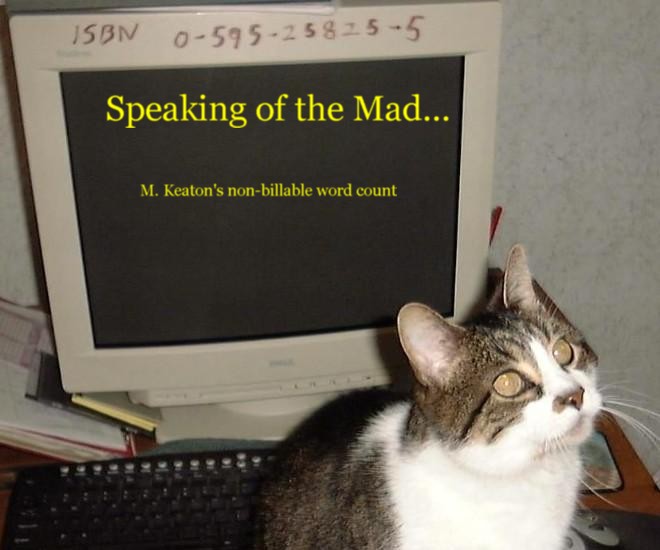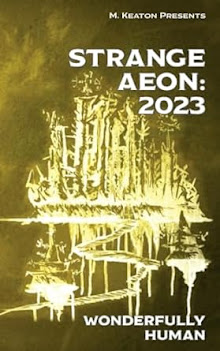I think it will be interesting to see the development of certain themes in the steampunk genre over the coming years. Most steampunk uses a pseudo-Victorian era setting and this was a time that had several pronounced cultural issues at work. The oppression of women and open racism were the accepted norm and an almost casual level of violence permeated most cultures of the time period. On the positive side, imperialism still held sway and the industrial revolution had not yet spread to completely subjugate the agrarian culture. Needless to say, by using this time period as a backdrop—a time period firmly straddling a whole host of cultural and social developments—the genre has huge potential to explore a vast number of issues. Right now, most steampunk works concentrate more on entertainment and action but the deeper, more thematic works will come as the genre grows.
One item that specifically interests me will be the push and pull between feminism and misogyny within the genre. There is a possible historic template in the development of science-fiction and fantasy that may play out here as well. Both SF and fantasy were originally male oriented (and male dominated) genres. So much so that entire subsections of fantasy were labeled by critics as “male masturbatory literature” (for example, Robert Howard’s Conan stories, the Horse Clans series, and John Norman’s Gor books). In time, however, dames pushed their way into the genre and began to assert their own views, both as writers and as an ever-increasing portion of the reading (buying) market. Eventually the pendulum swung so far that, by the time LeGuin and Bradley were big names, mainstream fantasy was more of a vehicle for feminist propaganda than actual good storytelling. (Okay, maybe I generalize a little much and maybe, just maybe, I’m tweaking some people by using terms like “dames” but the general point is a sound one.) Today, the genre has mostly leveled out although it still leans “female” because of the shift in buying power within the market (more women buy books than men).
But, will this happen in steampunk? Obviously the misogynistic elements are readily apparent in the oppressive, paternalism of the Victorian era but will history repeat itself? I don’t know. One could argue against it because the current steampunk movement already has a strong female presence among both writers and readers. Cherie Priest certainly doesn’t skimp on strong women as characters in her books.
However, there is the extenuating fact that steampunk is not only a literary genre but also an aesthetic—that it includes and plays to a certain visual style bringing in influences outside just the written word. If you examine steampunk fans at public gatherings and the outfits they wear, you will notice that the women are not, as a rule, rejecting the physical symbols of Victorian oppression. Rather, they are embracing them—corsets and painful shoes are in abundance. What does it mean, if it is relevant at all? I don’t know and that’s why I’m interested in watching the trends.
It may be that the costuming is irrelevant to the literature but steampunk relies heavily on the aesthetic for much of its current definition. Will the genre split and create an eroticized sub-category or will the possible issues be completely swept under the rug by the strong tide of homogenization that seems to swamp any new and emerging artistic trend? Could it be that sometimes chicks just like to be frail and frilly and that there’s nothing intrinsically misogynistic about it?
Cynically, one might ask if it is relevant at all because steampunk may be a short-lived fad and nothing more. I doubt this for three reasons. One, although not labeled as steampunk, this style has always been present and used in SF/F. Two, because steampunk does span beyond just literature into apparel, music, and the like, and therefore it has a stronger base and a wider audience footprint than one might suspect. And three, because steam is one of the cheapest special effects to create and movies and TV drive most of the entertainment industry—simple economics predicts longevity.
Perhaps a more significant issue might be why the genre is so appealing. SF/F, so long noted for looking forward, is now clearly turning back and focusing on a previous, and one might say more comfortable, and more structured time. Does this indicate a growing fear of technology and a society that on some level fears it is losing control of its own devices? Is it a kind of literary nostalgia for a “better time”? A reaction to an overwhelming array of gadgets and internet connectivity invading into our personal lives?
Or is it a generation finally waking up to the fact that the age of Imperialism was a fascinating time in the development of Western culture and therefore a great setting for exciting stories?
As I’ve said, I don’t know but I think the answers may be worth looking for.
Subscribe to:
Post Comments (Atom)





















1 comment:
The socio-politics of steampunk are kind of an uncomfortable thing to look closely at, for me, as a woman and a person with a disability. I mean, there *is* a lot of ick mixed up with the Victorian era.
Having said that, the tension between difficult/unenlightened society and strong, smart characters from disenfranchised groups is pretty interesting, too. I haven't got my hands on Cherie Priest's work yet, but I did really enjoy N. K. Jemisin's The Effluent Engine about a pair of mixed-race women.
(The very end disappointed me, but I was glad to have read it anyway.)
Post a Comment